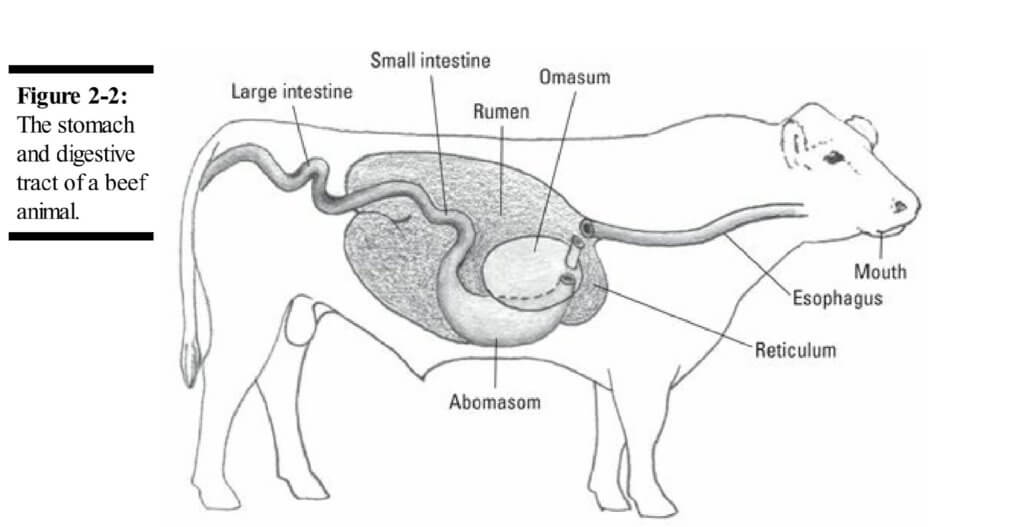
Ruminant animals have more than one stomach, namely the rumen, reticulum, omasum, and abomasum. These four stomachs have complementary structures and functions that allow for efficient digestion processes.
Rumen is an extremely large stomach organ that nearly fills the left side of the ruminant's abdomen. The rumen and reticulum are interconnected in structure. In adult cows, their combined volume can reach 200 liters, and they have the ability to mix and churn food every minute. The rumen contains a multitude of microorganisms, including bacteria, protozoa, and fungi, which can rapidly proliferate and aid in the digestion of ruminant animals. Most of these microorganisms are anaerobic. The function of rumen microorganisms is to assist in the fermentation process of plant-based foods, converting them into protein for the animal. Thus, the protein requirement for ruminant animals can naturally be obtained from the plants they consume. However, when providing unconventional feed to ruminants, such as eggs, bone meal, or specific meat meal, careful attention must be paid to the dosage and frequency, given that ruminant animals are herbivores with a threshold for digesting such foods due to their digestive capabilities being closely linked to the quantity and types of microorganisms present in the rumen.
Reticulum acts as a connecting organ between the rumen and omasum. The reticulum has a multi-layered epithelial lining. Similar to the rumen, the reticulum contracts and churns, facilitating food mixing and digestion.
The third stomach, omasum, also has a multi-layered epithelial structure but is more sheet-like. The omasum's function is to absorb water, certain fatty acids, and sodium. Food enters the omasum gradually, enabling a gradual absorption of nutrients.
Abomasum is the fourth stomach, structurally and functionally resembling the stomach of non-ruminant animals. It is equipped with glandular epithelium that secretes mucus, hydrochloric acid, and proteolytic enzymes (enzymes that aid in protein digestion). The abomasum is where the chemical digestion process occurs, allowing for more efficient breakdown and absorption of nutrients.
So, those were the functions of the four stomachs of ruminant animals. Don't forget to continue following our interesting and informative updates...

Image source: Raising Beef Cattle For Dummies, 2012



